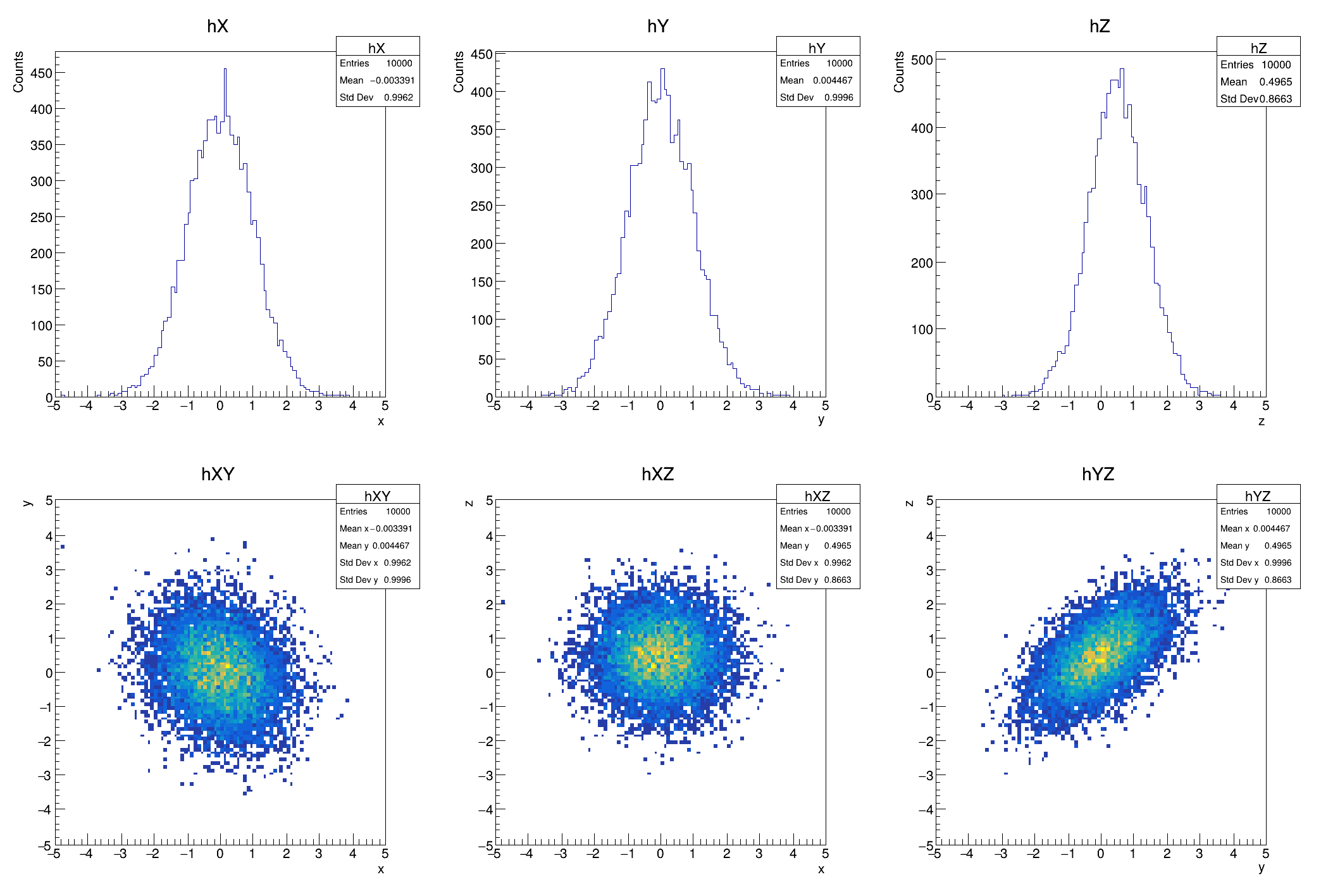

Tutorial illustrating the multivariate gaussian random number generation
const int dim = 3;
double pars[dim] = {0, 0, 0.5};
double cov[dim * dim] = {1.0, -0.2, 0.0, -0.2, 1.0, 0.5, 0.0, 0.5, 0.75};
TH1F*
hX =
new TH1F(
"hX",
"hX;x;Counts", 100, -5, 5);
TH1F*
hY =
new TH1F(
"hY",
"hY;y;Counts", 100, -5, 5);
TH1F*
hZ =
new TH1F(
"hZ",
"hZ;z;Counts", 100, -5, 5);
TH2F*
hXY =
new TH2F(
"hXY",
"hXY;x;y;Counts", 100, -5, 5, 100, -5, 5);
TH2F*
hXZ =
new TH2F(
"hXZ",
"hXZ;x;z;Counts", 100, -5, 5, 100, -5, 5);
TH2F*
hYZ =
new TH2F(
"hYZ",
"hYZ;y;z;Counts", 100, -5, 5, 100, -5, 5);
}
}
ROOT::Detail::TRangeCast< T, true > TRangeDynCast
TRangeDynCast is an adapter class that allows the typed iteration through a TCollection.
GSLRandomEngine Base class for all GSL random engines, normally user instantiate the derived classes ...
1-D histogram with a float per channel (see TH1 documentation)
2-D histogram with a float per channel (see TH1 documentation)
- Author
- Jorge Lopez
Definition in file multivarGaus.C.


